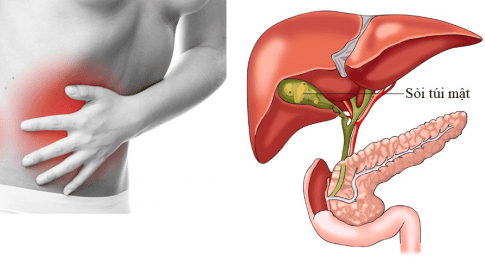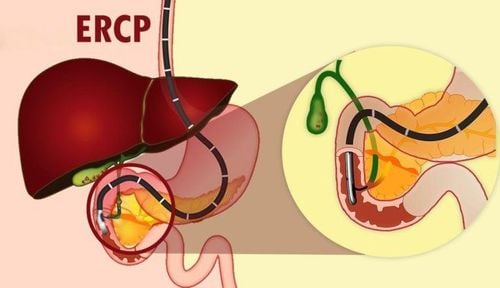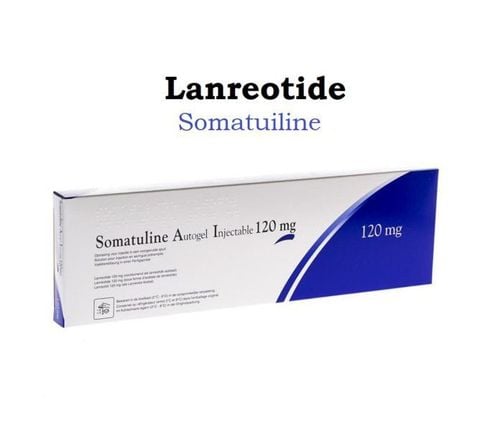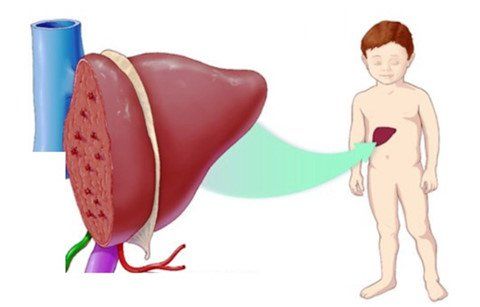This is an automatically translated article.
The article is professionally consulted by Master, Doctor Le Phuc Lien - Urologist - Department of General Surgery - Vinmec Central Park International General Hospital. The doctor has more than 12 years of experience in the field of urology and specialized urology.Gallstone disease - gallstones is a fairly common disease in our country when accounting for more than 90% of the total number of patients with gallstones. If not detected and treated promptly, the disease can cause many dangerous complications such as biliary obstruction, inflammation, acute pancreatitis...
1. Common bile duct stones
Gallstones of the common bile duct, is a fairly common disease in Vietnam. If gallstones account for only about 8-10% of gallstones, there are times when common bile duct stones account for nearly 90% of all gallstone diseases. Today, the rate of gallstone disease is increasing sharply, causing the rate of common bile duct stones to decrease significantly to only about 60% of the total.Unlike common bile duct stones in countries in Europe and America, choledocholithiasis in Vietnam is mostly complicated, mainly in the composition of common bile duct stones is pigment bile, its nucleus eggs or carcasses of roundworms. The possibility of worms entering the biliary tract is high, leading to the formation of gallstones.

Bệnh sỏi ống mật chủ khá thường thấy tại Việt Nam
2. Symptoms of common bile duct stones
2.1. Clinical warning symptoms Right lower quadrant pain Severe pain, rolling over, buttock pain. The pain is widespread, up the right shoulder or to the back. After eating, the pain is more severe (bile ducts are stimulated to contract much and strongly). Pain persists, pain lasts up to 2 to 3 hours. Warning symptoms of the whole body Fever: fever comes on at the same time or only after a few hours when you feel the pain. Sometimes the fever is as high as 39-40 degrees Celsius, accompanied by chills and sweating. Signs of infection on the face: dirty tongue, dry lips, fatigue; rapid pulse, lean body; yellow skin, yellow eye mucosa. Physical warning symptoms Yellow skin, yellow mucous membranes: is the most obvious manifestation, appearing usually later, initially only slightly yellow in the sclera, then gradually darker yellow in both the skin and the eye mucosa. All three symptoms such as fever, pain or jaundice will all occur and then disappear according to a certain process. If the patient has been ill for a long time, there is certainly a history of the patient having a history of fever, pain, or jaundice or a history of worms entering the biliary tract or having surgery on the bile ducts. The gallbladder is enlarged: sometimes the gallbladder is felt to rise just below the edge of the right flank like an egg, and when touched, it is round, even, smooth, when it is painful to press, it moves with each breath. You can feel the gallbladder distended up to 35%. The liver is enlarged below the 2nd and 3rd ribs, tender. Pain points: the gallbladder, the right parasternal area or the pancreatic duodenum is very painful and often reacts with the right subcostal abdominal wall.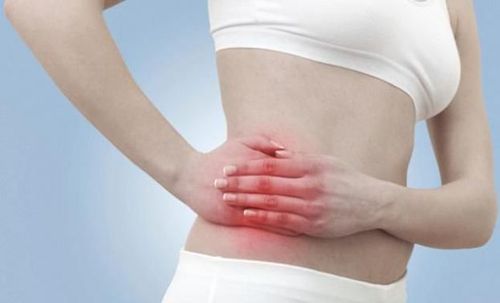
Đau dữ dội dưới sườn bên phải cảnh bảo nguy cơ sỏi ống mật chủ
Other warning symptoms Vomiting with pain. Little urine and dark urine, dark look like water and often detected early. Due to complete obstruction of bile, sometimes stools are discolored and change color. Due to toxic bile salts, itching of the skin (rare cases) occurs. 2.2. Laboratory warning symptoms Blood test results WBCs at risk are increased , and polymorphonuclear leukocytes are also increased. Erythrocyte sedimentation rate increases by 50 to 100mm only in the first hour. Results Bilirubin increased high (normal threshold is only < 17 micromol/l), especially direct Bilirubin. The SGOT index is slightly up. Urea index with creatinine in the blood tends to increase when there is a risk of affecting the kidneys. Urine test results: Presence of many bile pigments, bile salts in the urine. X-ray results Abdominal scan results are not prepared: enlarged liver is seen, sometimes gallstones are seen. Contrast-enhanced cholangiography (oral or intravenous): low index results of about 40 to maximum 50%, and this method is rarely used today. Percutaneous cholangiography: The doctor will appoint to conduct for patients with biliary obstruction, dilated biliary tract. Imaging of the biliary tract with retrograde flow through duodenoscopy: gives imaging results of the biliary tract, pancreatic duct and determines the location of the stone, accompanied by a survey of the ampulla of Vater and the differentiation of cancerous changes of the ampulla of Vater. , in order to be able to perform the combined process of stone removal. The success rate is up to 95% Ultrasound results Ultrasound method, the results bring high value, determine the location and size of stones, showing the size of the gallbladder, biliary tract; and showed accurate results up to 95%, widely applied to support the diagnosis of hepatobiliary diseases. Through the image of ultrasound results, common bile duct stones often have a dark shape, appear shadow and are located in the common bile duct.

Xét nghiệm máu và nước tiểu cùng với các kỹ thuật khác nhằm phát hiện và điều trị sớm bệnh sỏi ống mật chủ
Results of computed tomography computed tomography results showed the gallbladder, biliary tract, liver and pancreas; They are especially valuable for detecting small lesions in the liver and pancreas. Spiral CT scan supports higher diagnosis accuracy.
Nuclear magnetic resonance imaging results Resonance imaging results help to clearly identify the types of ducts appearing in the tree of the biliary and pancreatic ducts. This method has many outstanding advantages over pancreatography - retrograde cholangiopancreatography through duodenoscopy at the place of non-intervention, without using contrast agents; However, this method is merely to confirm diagnostic imaging results.
3. Where is the best treatment for common bile duct stones?
Each location will have different reactions or symptoms and symptoms. When you see symptoms of common bile duct stone disease, you should go to a reputable hospital with modern facilities and high medical qualifications such as Vinmec International General Hospital.
Here, the treatment of common bile duct stones is being applied by laparoscopic surgery to remove common bile duct stones with Kehr drainage, an advanced method currently applied in many countries around the world. This method uses an Avance CS2 anesthesia machine, GE's R860 ventilator, and an Endoscope, with a postoperative success rate of up to 95%.
Please dial HOTLINE for more information or register for an appointment HERE. Download MyVinmec app to make appointments faster and to manage your bookings easily.





